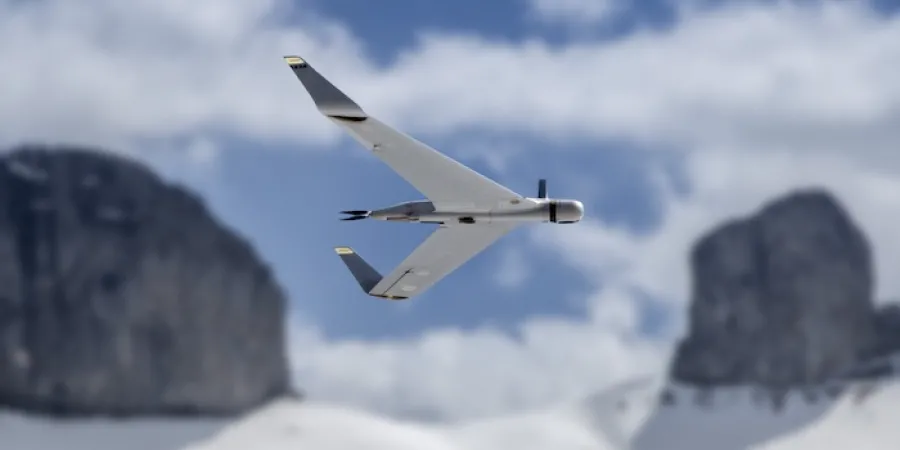Aeronautics Unveils Its Latest Loitering Munition System, the Orbiter 2 LM
The Orbiter 2 LM combines the functionality of the loitering munition with ISR capabilities
Eyal Boguslavsky
| 11/06/2024
Aeronautics, an Israeli designer, developer, and manufacturer of Unmanned Aerial Systems (UAS) for the global defense and HLS markets, introduces the Orbiter 2 LM (Loitering Munition), the latest addition to its portfolio of loitering munition systems.
According to Aeronautics, the Orbiter 2 LM combines the functionality of a loitering munition with ISR capabilities. With an extended endurance of two hours, the system offers high mission flexibility, ensuring success in uncertain operational scenarios, particularly those involving targets with short time windows.
The system is fully operational in GPS-denied areas and utilizes advanced, interference-immune, and encrypted communication for secure data transmission. It also supports full connectivity to external C4I systems.
The Orbiter 2 STS (Sensor-to-Shooter) Mission System is based on two combat-proven, fixed-wing, electric UAVs – the Orbiter 2 ISR and the Orbiter 2 LM. Both systems share a common platform, communication data link, control station, and operational software. The Sensor-to-Shooter Mission System enhances mission versatility by facilitating intelligence gathering, precise target pinpointing, and BDA (Battle Damage Assessment) via the Orbiter 2 ISR, while enabling rapid target engagement with the Orbiter 2 LM.
The company claims that the STS Mission System offers superior performance, a fast sensor-to-shooter mission cycle, and operational flexibility, all within a small logistics footprint. Moreover, the system enables efficient flight training by leveraging the Orbiter 2 ISR for diverse operational scenarios. Both the Orbiter 2 LM and Orbiter 2 ISR feature high-resolution day and IR electro-optical payloads, onboard Automatic Target Recognition (ATR), and Video Motion Detection (VMD) for enhanced operational capabilities.
The Orbiter 2 LM combines the functionality of the loitering munition with ISR capabilities
Aeronautics, an Israeli designer, developer, and manufacturer of Unmanned Aerial Systems (UAS) for the global defense and HLS markets, introduces the Orbiter 2 LM (Loitering Munition), the latest addition to its portfolio of loitering munition systems.
According to Aeronautics, the Orbiter 2 LM combines the functionality of a loitering munition with ISR capabilities. With an extended endurance of two hours, the system offers high mission flexibility, ensuring success in uncertain operational scenarios, particularly those involving targets with short time windows.
The system is fully operational in GPS-denied areas and utilizes advanced, interference-immune, and encrypted communication for secure data transmission. It also supports full connectivity to external C4I systems.
The Orbiter 2 STS (Sensor-to-Shooter) Mission System is based on two combat-proven, fixed-wing, electric UAVs – the Orbiter 2 ISR and the Orbiter 2 LM. Both systems share a common platform, communication data link, control station, and operational software. The Sensor-to-Shooter Mission System enhances mission versatility by facilitating intelligence gathering, precise target pinpointing, and BDA (Battle Damage Assessment) via the Orbiter 2 ISR, while enabling rapid target engagement with the Orbiter 2 LM.
The company claims that the STS Mission System offers superior performance, a fast sensor-to-shooter mission cycle, and operational flexibility, all within a small logistics footprint. Moreover, the system enables efficient flight training by leveraging the Orbiter 2 ISR for diverse operational scenarios. Both the Orbiter 2 LM and Orbiter 2 ISR feature high-resolution day and IR electro-optical payloads, onboard Automatic Target Recognition (ATR), and Video Motion Detection (VMD) for enhanced operational capabilities.



